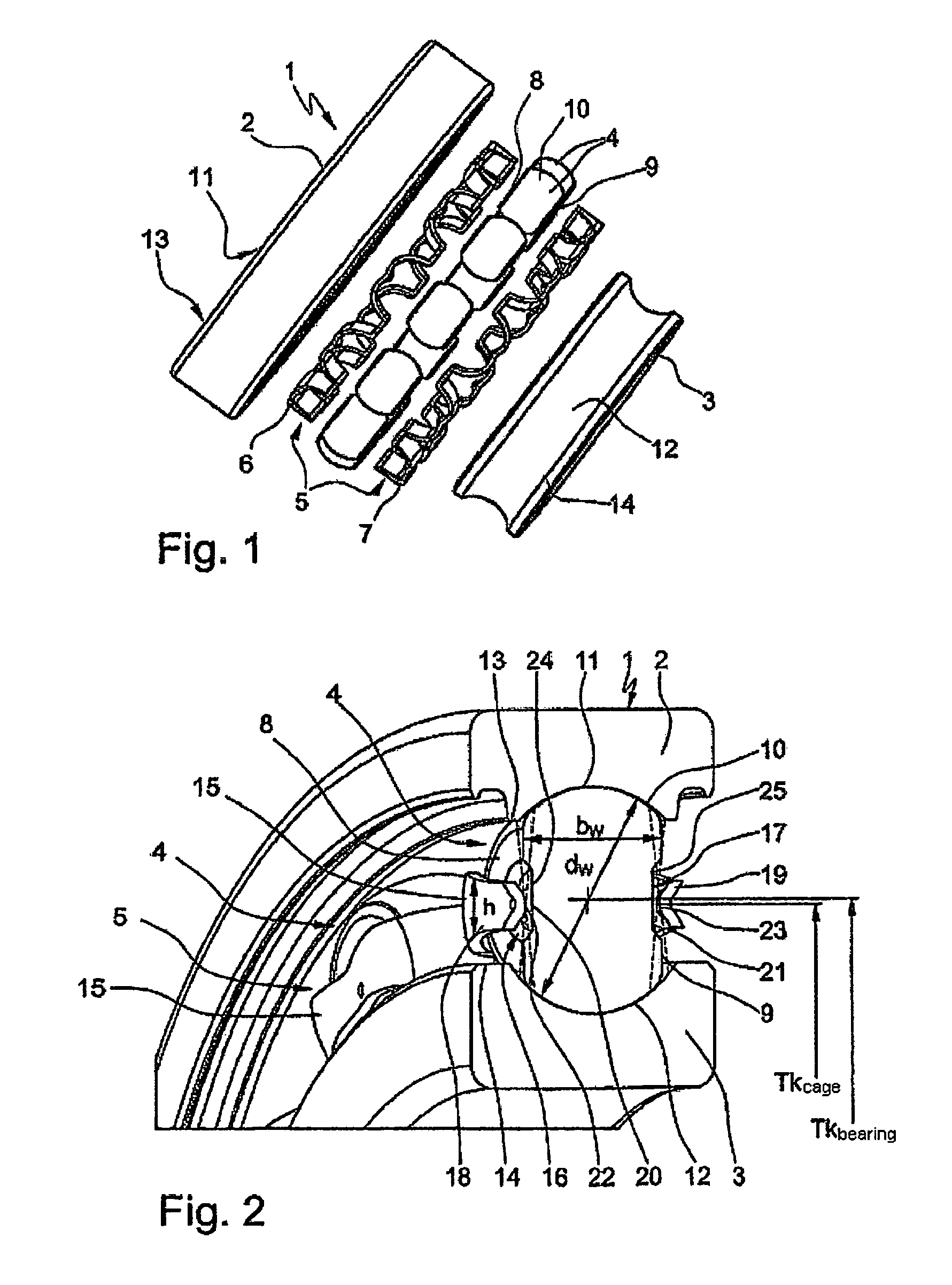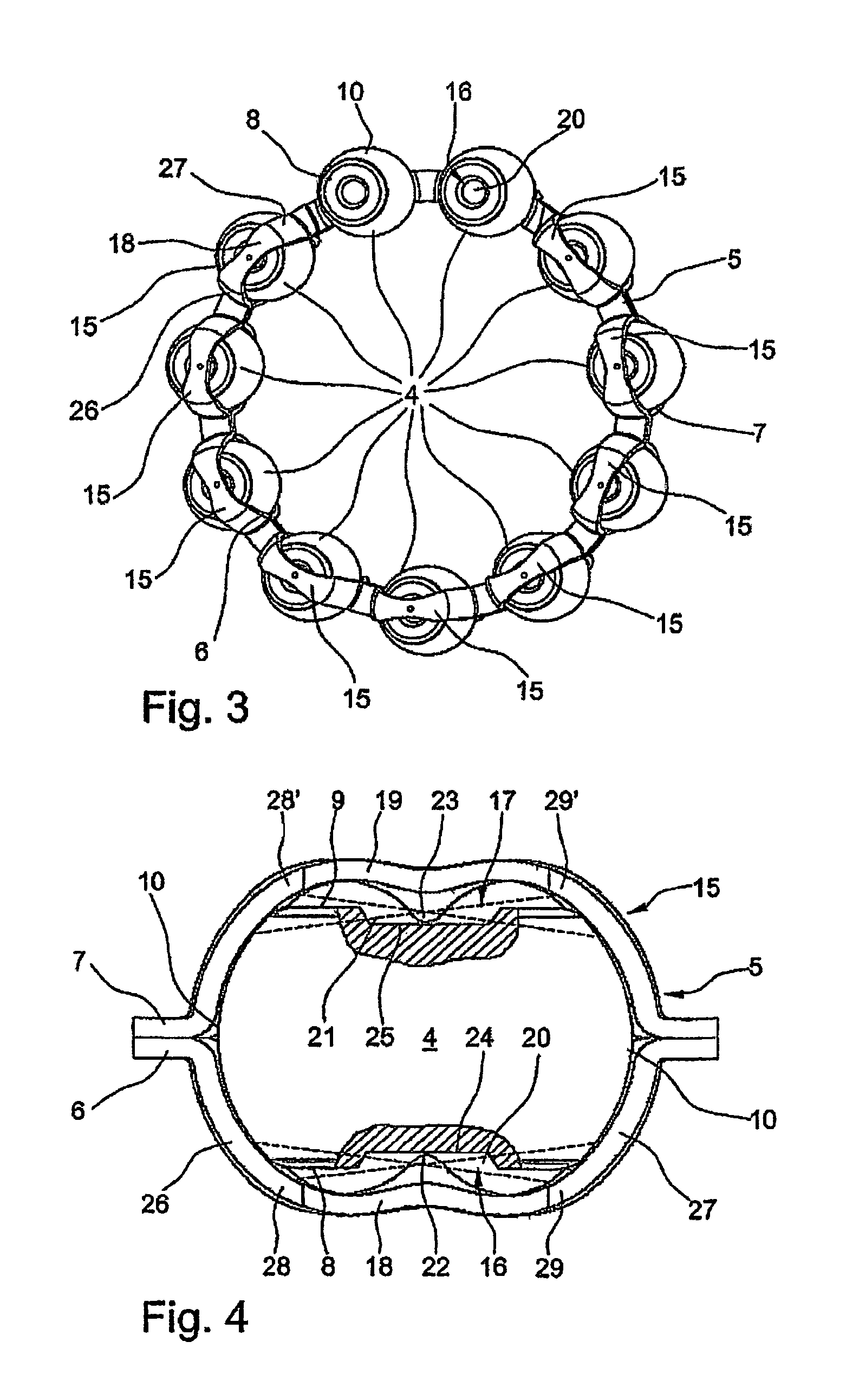Radial antifriction bearing, especially single-row grooved antifriction bearing
a technology grooves, which is applied in the direction of rolling resistance optimization, roller bearings, mechanical equipment, etc., can solve the problems of increasing the operating temperature of radial rolling bearings, the cage of bearings is unsuitable for such special rolling bodies, and the bearings of this type have limitations in terms of bearing carrying capacity, etc., to achieve cost-effective, cost-effective, low production costs
- Summary
- Abstract
- Description
- Claims
- Application Information
AI Technical Summary
Benefits of technology
Problems solved by technology
Method used
Image
Examples
first embodiment
[0020]FIG. 4 shows an individual part illustration of a cage pocket of the bearing cage of a radial rolling bearing designed according to the invention; and
second embodiment
[0021]FIG. 5 shows an individual part illustration of a cage pocket of the bearing cage of a radial rolling bearing designed according to the invention.
DETAILED DESCRIPTION OF THE DRAWINGS
[0022]It may be gathered clearly from the exploded illustration according to FIG. 1 that a radial rolling bearing 1 designed as a single-row grooved rolling bearing consists essentially, in a similar way to known grooved ball bearings, of an outer bearing ring 2 and of an inner bearing ring 3 and also of a multiplicity of rolling bodies 4 arranged between these bearing rings 2, 3. The rolling bodies 4 are in this case formed, as can be seen clearly, by what are known as spherical disks which each have two side faces 8, 9 flattened symmetrically from a basic spherical shape and arranged parallel to one another and roll with their running surfaces 10 in two groove-shaped raceways 11, 12 which are in each case incorporated into the inside 13 of the outer bearing ring 2 and into the outside 14 of the i...
PUM
 Login to View More
Login to View More Abstract
Description
Claims
Application Information
 Login to View More
Login to View More - R&D
- Intellectual Property
- Life Sciences
- Materials
- Tech Scout
- Unparalleled Data Quality
- Higher Quality Content
- 60% Fewer Hallucinations
Browse by: Latest US Patents, China's latest patents, Technical Efficacy Thesaurus, Application Domain, Technology Topic, Popular Technical Reports.
© 2025 PatSnap. All rights reserved.Legal|Privacy policy|Modern Slavery Act Transparency Statement|Sitemap|About US| Contact US: help@patsnap.com



